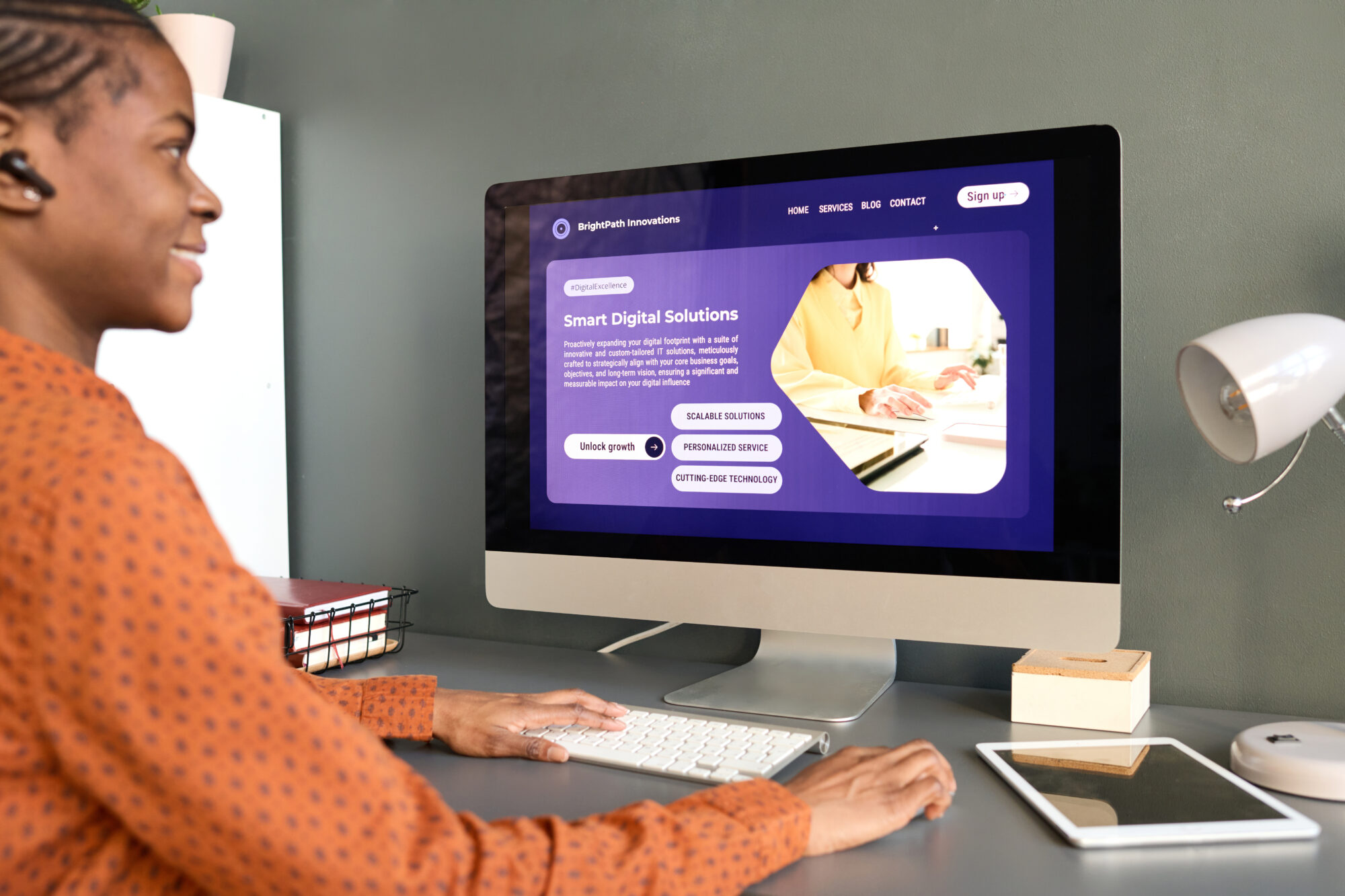Why Web Accessibility Isn’t Optional, It’s Essential.
In today’s digital-first world, your website is often the front door to your business. But for millions of people living with disabilities, that door remains closed far too often. As the internet becomes the primary space for communication, engagement, and commerce, web accessibility is no longer a nice-to-have, it’s a necessity.
The rise in web accessibility awareness has brought with it a rise in legal accountability. Small and medium-sized businesses are finding themselves at the center of this shift, with lawsuits and compliance issues becoming increasingly common across industries. But beyond the legal landscape lies something even more important: the opportunity to serve your entire audience with intention, dignity, and inclusivity.
20% of the population has a disability
98% of websites are inaccessible
300% YoY increase in ADA legal action
When it comes to building a strong digital presence, one essential element that too often gets overlooked is website accessibility. For small businesses in the U.S., ensuring your website is accessible isn’t just a best practice; it’s a legal requirement under the Americans with Disabilities Act (ADA).
ADA compliance means making your website usable for people with a wide range of disabilities, including visual, hearing, cognitive, and motor impairments. But what does that look like in practice? And what are the real implications for small businesses?
Let’s break it down.
1. The Legal Foundation: ADA Title III and Website Accessibility
The ADA was enacted to ensure equal access to public spaces, including websites. Title III of the ADA specifically applies to “places of public accommodation,” a category that the Department of Justice (DOJ) has clarified includes business websites.
What This Means:
- All businesses, regardless of size, even sole proprietors, are generally expected to provide accessible digital experiences.
- While there is an “undue hardship” clause, allowing some exceptions for significant cost or difficulty, this defense is rarely successful. Digital accessibility solutions are typically affordable and scalable for most businesses.
2. The Gold Standard: WCAG 2.1 Level AA
To comply with the ADA, businesses are encouraged to follow the Web Content Accessibility Guidelines (WCAG) 2.1, a set of international standards developed to make web content more accessible.
What Level AA Covers:
- Perceivable: Use sufficient color contrast and provide alt text for images.
- Operable: Ensure your site can be navigated via keyboard.
- Understandable: Use clear, readable language and predictable navigation.
- Robust: Build your site to be compatible with assistive technologies like screen readers.
Meeting WCAG 2.1 Level AA ensures a strong baseline of accessibility, making your website usable for the majority of individuals with disabilities.
3. Practical Accessibility Enhancements for Your Website
Here are some concrete steps your business can take to improve website accessibility:
- Image Alt Text: Add clear, descriptive text for all images.
- Video Captions and Transcripts: Provide captions and transcripts for all multimedia content.
- Color Contrast: Ensure text is readable by using high-contrast color combinations.
- Keyboard Navigation: Enable full navigation of your site using only a keyboard.
- Accessible Forms: Use clear labels and instructions, and ensure all form fields are navigable and understandable.
4. The Risks of Ignoring Compliance
Failing to make your website accessible doesn’t just exclude potential customers, it exposes your business to legal risk.
Potential Consequences Include:
- Lawsuits and Legal Fees: ADA lawsuits related to website accessibility are increasingly common.
- Fines or Settlements: Non-compliance can result in costly settlements or government-imposed penalties.
- Reputational Damage: Customers care about inclusivity; failing to meet standards can harm your brand’s image.
5. The Upside: Why Accessibility Is Good for Business
ADA compliance is about more than avoiding penalties, it’s about building a business that serves everyone.
Benefits Include:
- Wider Reach: Accessibility opens your website to millions of users with disabilities.
- Better UX: Improving navigation, readability, and clarity benefits all users, not just those with disabilities.
- Stronger SEO: Many accessibility improvements also boost your search engine rankings.
- Legal Peace of Mind: Meeting compliance standards helps protect your business from litigation.
Moving Forward with Accessibility
Accessibility isn’t a one-time fix. It’s an ongoing commitment to serving your entire audience. For small businesses, taking steps toward ADA compliance is both a responsible business decision and a powerful expression of your values.
If you’re not sure where to start, consider conducting a basic accessibility audit or working with a digital team that understands both the legal landscape and the user experience.
Inclusive websites aren’t just compliant, they’re smarter, stronger, and built for everyone.
Want support bringing your site into compliance? Let our team walk through it with you. Contact us for a complimentary accessibility audit.
Pro Tip: Tools like WAVE, AudioEye, and axe DevTools can help you audit your site quickly and effectively.

